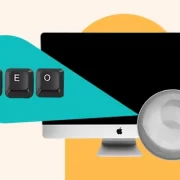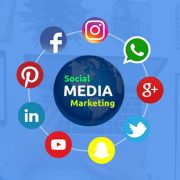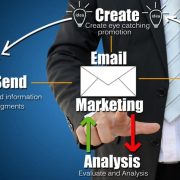Digital marketing is a strategic initiative that businesses must take seriously today. As consumers seek information about companies and products, many look to the internet to learn more. Different digital marketing strategies can be used to reach your target audience via the same channels they are already using.
Before we begin our study of the different types of digital marketing, let’s first define digital marketing.
What is Digital Marketing
Digital Marketing is any strategy that uses an electronic device that can or may not is connected to the internet. Even television commercials and radio ads can be considered digital marketing strategies. However, digital marketing has evolved, and new strategies are possible.
Digital marketing is crucial for being relevant and competitive in your industry. Your business must include many opportunities to reach your target audience if it has a website or digital presence.
Continue reading: Top Benefits of Digital Marketing
Let’s now learn more about digital marketing.
Different types of digital marketing
You have many options for digital marketing to reach your target audience. Multi-channel digital marketing can be a great way to create a comprehensive strategy that produces the best results.
Here are six types of digital marketing that can help you decide which strategies might work best for your business:
Content Marketing
Content Marketing is informational and valuable content such as blog posts, how-to videos, or other instructional materials. This type of marketing allows you to connect with your audience and answer any questions they may have. This type of marketing can help you generate leads and close more sales.
Regular content should be published with the target audience at heart. Your brand should be trusted by the industry and publish quality content. Your audience should come to you first for the most current industry trends.
Pros
It is entirely free.
Content is a highly versatile option. Content allows you to educate, entertain and inspire your audience.
It is the fuel for all other forms of digital marketing.
Cons
The high competition makes it difficult to rank organically for targeted keywords.
To be successful, consistency and high quality are essential. You must ensure that your content meets your customers’ needs while also branding your company and reaching your business goals.
Next Steps
A simple but effective content strategy is critical to a successful start.
Consider the needs of your customers and the message you want to convey to them.
Choose the format: audio, video, articles, or other.
Finalize which channels you will use for each piece of content.
Search Engine Optimization
SEO is creating content so that search engines such as Google rank your page highly on the search engine results pages (SERP).
Google uses algorithms to determine how relevant your page is to keywords the user is searching. These algorithms frequently change, so SEO strategies need to be updated regularly to stay effective.
SEO can help you rank higher in the SERPs and get more organic traffic if done correctly.
Pros
It improves brand visibility.
It is more cost-effective than PPC.
Cons
SEO is dependent on both content and technology.
Google’s evolving algorithms could hinder your efforts.
SEO takes time to be effective.
Next Steps
Good content is the foundation of SEO. It would help if you created a content strategy to determine what people are searching for.
Keep up to date with Google’s content recommendations.
A plug-in to optimize their site is a good choice for beginners (e.g., Yoast to WordPress
Search Engine Marketing/Pay-per-Click
Search engine marketing (or SEM) refers to paid ads at the top of search engine results pages. These ads are typically priced based on how many clicks they receive, so they ” pay per click.”
When you pay for the top SERP slots, the “Ad” label will be next to your URL. Many people still click these links, despite the fact that they are advertisements. This can be an effective digital marketing strategy.
Pros
It is a quick way to reach the top ranks.
It saves time.
Cons
Targeting popular keywords can be costly.
People are more skeptical about ads appearing in search results than they trust natural results.
Next Steps
To generate more leads, you can use PPC. To find the best targeting combination, do keyword research.
Social Media Marketing
Social media platforms can be a digital marketing channels with social media marketing. You can buy ads to reach new audiences or create a profile for your business on any social media platform and post to promote new products, sales, or newly published content.
Depending on your target audience, which social media platform you will use depends on what you are trying to reach. According to Pew Research, Instagram is the best platform for audiences between 25 and 29 years old, while Facebook can get those aged 65+.
Pros
It offers high conversion rates.
Your efforts will multiply quickly when people share, like, comment and share your content.
Facebook/Instagram ads let you target specific customer segments and communicate your message to the right people.
Cons
Social media can be challenging. Now and again, the algorithm is updated. New content formats are also introduced regularly. It is essential to keep up with the latest developments.
It may seem easy to post on social networks, but it takes strategic planning and enough time to accomplish it consistently and efficiently.
Next Steps
Include social media channels in your content marketing strategy. You must decide on the content you want, how it will be presented, and what channels you will use to distribute your ideas. It would help if you created a calendar that allows you to mark days when you want to post on one channel and days when you want it posted on another. Social media is interactive. You must respond to customers and publish high-quality content. Honest conversations build trust and loyalty for brands.




















Comments